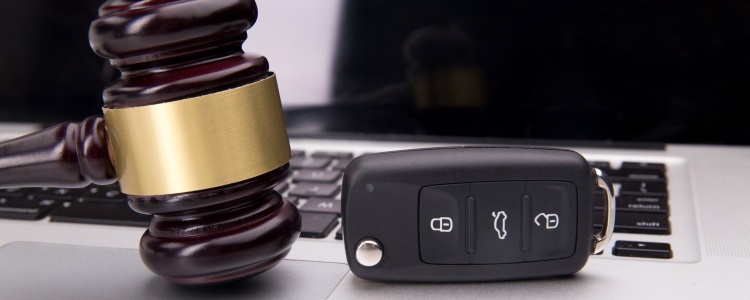Buying a car during bankruptcy can make sense for some borrowers, but it may not be a good idea depending on what bankruptcy you’re in. Here’s how financing a vehicle during bankruptcy typically works, and how to start the process.
Can I Finance a Car During Bankruptcy?
Yes, it’s possible to finance a vehicle during bankruptcy. However, if you’re in Chapter 13, it’s usually much easier to get that approval than if you’re in Chapter 7.
Chapter 13 is referred to as the repayment bankruptcy. In this filing, your court-appointed trustee crafts a repayment plan for you to follow based on your income and situation. The goal is to help you repay as much of your debt as possible within the scope of the bankruptcy.
Chapter 7 bankruptcy is called the liquidation bankruptcy, and your assets are sold to repay your debts. In both chapters, any unsecured debts that can’t be repaid or aren’t paid by the end of the process are likely to be wiped away in your bankruptcy discharge.
With Chapter 7, it may not make that much sense to finance a vehicle since the filing process is so short – typically only a few months. Most Chapter 7 bankruptcy filings last between four and six months, so many lenders can be hesitant to approve you for a loan. Getting approved for a car loan during Chapter 7 is tough, and the court may not be willing to let you incur more debt during the filing at all.
Chapter 13 is a longer filing – lasting either three or five years – so there’s a process in place if you need to finance a vehicle. And for many borrowers, financing a vehicle may be necessary to successfully complete their bankruptcy. For example, if you need a car to make it to work so you can repay your Chapter 13 repayment plan, then that would be a solid reason for taking on an auto loan while in bankruptcy. If this is your situation, then financing a car during Chapter 13 bankruptcy can make a lot of sense.
Getting Permission to Finance a Car During Chapter 13
 When you’re in Chapter 13 bankruptcy and you need to finance a car, you must get permission from the court to take on debt and prove you can afford it.
When you’re in Chapter 13 bankruptcy and you need to finance a car, you must get permission from the court to take on debt and prove you can afford it.
The first step in getting an auto loan during Chapter 13 bankruptcy is finding a lender that can work within these circumstances. Many traditional lenders may not be able to assist you while you’re in an active bankruptcy, but subprime lenders often can. Subprime lenders are signed up with special finance dealerships (more on finding those later).
To get permission to finance a vehicle, apply for auto financing with the lender, see if you qualify and if you do, and have the dealership draft a buyer’s order. The buyer’s order should include the terms of your loan, the highest possible interest rates you qualify for, and the words “or similar” next to the car of choice. This is just in case the vehicle you picked out is sold, and that way you don’t have to start the entire process over again.
With a buyer’s order in hand, contact your trustee and complete the paperwork outlining why you need a car loan. Also keep in mind that choosing a more modest, affordable vehicle increases your chances of getting permission. The trustee then puts in your request for a Motion to Incur Additional Debt.
If the court approves the request for an auto loan, you get an Order to Incur Additional Debt and take it back to the dealership and complete the car buying process. The car payments are then included in your repayment plan.
As you may have noticed, this process can take some time. While it may be tempting to skip all of this and just finance the car without getting permission from the court, you’d be out of luck. When a lender checks your credit reports, they can see your active bankruptcy status and can’t approve you for auto financing without the court’s permission.
What About Financing a Car After Bankruptcy?
Getting an auto loan after bankruptcy is an entirely different ballgame. For starters, it’s much easier for a borrower with a discharged bankruptcy to get approved for a car loan vs. borrowers who are still in the middle of the process.
The goal of bankruptcy is to get you on a more solid financial footing. So, once your bankruptcy has been discharged – both Chapter 7 and 13 – lenders are generally more willing to assist borrowers with a recently discharged bankruptcy.
Your credit score may be worse for wear afterward, so you still may need the assistance of bad credit auto lenders if your credit score is below 660.
Finding a Special Finance Dealership
Whether you’re in need of a bankruptcy auto loan in the middle of bankruptcy, or your bankruptcy has been discharged, a subprime lender could help you get the vehicle you need.
As we mentioned, subprime lenders are signed up with special finance dealerships. Most dealers are signed up with lenders, but not all are signed up with these bad credit lending institutions. Finding a special finance dealership that can assist bankruptcy borrowers can be a struggle, but here at Auto Credit Express, we want to make that search for a dealer easier.
We’ve cultivated a nationwide network of special finance dealerships and we’ll look for one in your local area for free. Simply fill out our auto loan request form to get started.
















